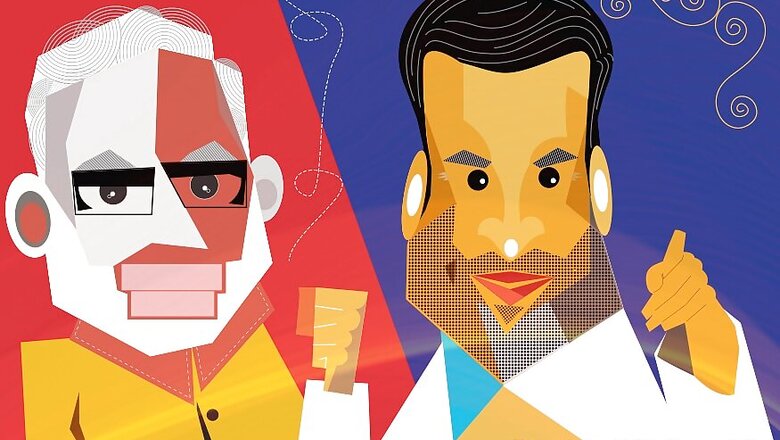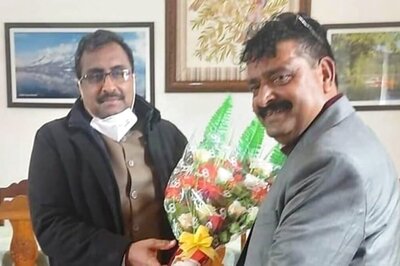
views
For a state that holds only 5% of India’s population, the attention that its recently concluded state elections commanded was disproportionate, but for a good reason. This is a state that propelled its former Chief Minister Narendra Modi to the national stage based on his performance in the state, popularly referred to as the ‘Gujarat Model’.
A basic fault-line underlines the ‘Gujarat Model’ if one looks at the very basic economic indicators. It’s one of the top states in terms of average income levels as well as growth rate, however, in terms of poverty alleviation and social indicators, it ranks average or below average, depending on which specific indicator you look at.
There is also a clear rural-urban divide on these parameters – with the urban areas pushing up the income and growth indicators consistent with the business and industry-friendly image and the rural areas pulling down the social and poverty-alleviation indicators.
The recent election results reflect this contrast quite clearly – the BJP won 45 of the 53 urban and mostly urban constituencies, while the Congress won 72 of the 129 rural and mostly rural constituencies.
Now, to understand the outcome of elections, we should not look at the groups whose voting pattern is steady. For example, BJP has had an edge in the urban areas and the Congress in the rural areas in the previous state elections as well. Moreover, its vote share has remained 48-49% since 2007, after almost touching the 50% mark in 2002.
We should rather look at the three groups of voters that can potentially change this set pattern. The first is turnout – high turnout usually means bad news for the incumbent government. The second is swing voters who move from one party to the other and the third factor is the voting behaviour of first-time voters.
Given the available facts, a comprehensive analysis along these three dimensions is not possible at this stage but some interesting observations emerge.
A constituency-wise analysis shows that BJP has lost whenever the voter turnout has approached 75%. The overall turnout this time was about 68%. Therefore, Congress’ improved performance does reflect constituency-specific increase in voter turnout, while the overall turnout remained insufficient for a reversal of electoral fortunes.
Interestingly, in the urban areas the sharpest drop in voter turnout occurred – from 72% in 2012 to 65% in 2017, while in rural areas it has seen a slight decrease. Clearly, lower turnout reflects dissatisfaction with the BJP among urban voters, but these voters were not sufficiently driven by anti-incumbency to show up and vote against the BJP.
It is impossible to quantify voters who switched their votes from the BJP to the Congress or other parties, except for anecdotal evidence suggesting fissures within the Patidar community.
An imperfect measure would be to look at how close the electoral margins. Another analysis shows that in 57 constituencies, the victory margin was 5% or less, and in 29 seats, it was less than 2%.
These were easily more hard fought elections than what the final seat tally suggests.
Interestingly, Congress won in 30 of the 57 seats with victory margins of 5% or less, while the BJP won 25. Another notable factor is the rise of the NOTA voters – nearly 2% of voters opted for NOTA in Gujarat and it appears that if they had gone to Congress instead, there could have been a reversal of electoral fortunes.
While no figures for the voting behaviour of first-time voters are available, a reasonable (but not perfect) proxy would be the voting pattern of young voters. A surprising trend that has been noted is that in constituencies with a high percentage of youth voters, who are normally considered to be more likely to vote for the BJP, the Congress has increased its vote share in this election.
Clearly, Narendra Modi’s energetic campaigning made a difference to the overall outcome, making it effectively a mandate for his rule at the Centre. This allowed the BJP to fend off a rising anti-incumbency wave which a newly energized Congress took advantage of. But it also put to rest delusions of grandeur in projecting the possibility of winning 150 seats. The supposed success of the ‘Gujarat Model’ catapulted Narendra Modi to the national stage.
This time he had to come back to Gujarat to fight hard to hold on to what is considered to be a BJP stronghold. The euphoria of the massive 2014 victory is officially over and a gripping new chapter in Indian politics has just started.
Prof. Maitreesh Ghatak is a Professor of Economics at the London School of Economics.



















Comments
0 comment